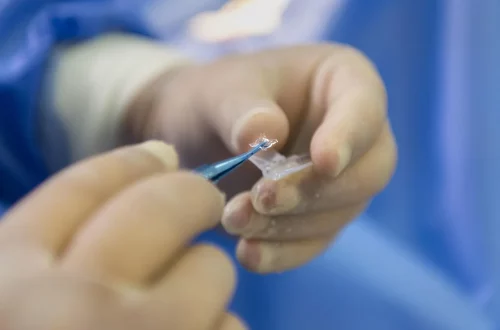
Understanding Vasectomy for Dogs: A Guide for Pet Owners
Understanding the complexities of pet ownership often involves navigating various health and behavioral decisions regarding our furry companions. Among these decisions, the topic of sterilization can be particularly sensitive. As responsible pet owners, we strive to make informed choices that impact our pets’ health and well-being. One such option is vasectomy for male dogs, a procedure that is sometimes overlooked in favor of traditional castration. This surgical intervention has garnered attention for its potential benefits and implications for pet owners seeking to control their dogs’ reproductive capabilities without some of the consequences associated with full neutering.
Vasectomy involves the surgical cutting and sealing of the vas deferens, the tubes that carry sperm from the testicles to the urethra. Unlike castration, which removes the testicles and eliminates the production of hormones such as testosterone, vasectomy preserves hormonal functions while effectively preventing reproduction. This distinction is significant for many dog owners who wish to maintain their pets’ natural behaviors and physiological health.
In this guide, we will explore the various aspects of vasectomy for dogs, including its benefits, risks, and considerations for pet owners. Understanding these factors is crucial for making an informed decision that aligns with the best interests of both the dog and the owner.
Benefits of Vasectomy for Male Dogs
Vasectomy presents several advantages for male dogs that can make it an appealing choice for pet owners. One of the most significant benefits is the preservation of hormonal function. By retaining the testicles, dogs continue to produce testosterone, which plays a vital role in maintaining their physical health and behavior.
Testosterone influences muscle mass, energy levels, and overall vitality. Dogs that undergo vasectomy may exhibit more balanced behavior compared to those that are fully neutered. Many pet owners report that their dogs remain active and energetic post-surgery, which can be particularly beneficial for working or active breeds. Additionally, maintaining hormonal levels can help prevent certain health issues associated with low testosterone, such as obesity and lethargy.
Another advantage of vasectomy is the reduced risk of certain medical conditions. Neutering has been linked to an increased incidence of specific health problems, including certain cancers and joint disorders. By opting for a vasectomy, pet owners may mitigate these risks while still preventing unwanted litters. Furthermore, the procedure itself is generally less invasive than castration, which can lead to quicker recovery times and fewer complications.
Behaviorally, vasectomized dogs may experience fewer changes compared to those that have been castrated. Many owners find that their pets retain their natural instincts and behaviors, which can be important for maintaining their quality of life. For instance, a vasectomized dog may continue to exhibit territorial behaviors and social interactions without the risk of fathering puppies.
Overall, the benefits of vasectomy for male dogs include preservation of hormonal function, reduced risk of certain health issues, and minimal behavioral changes. These advantages can make vasectomy a compelling option for responsible pet owners looking to manage their dogs’ reproductive health without compromising their overall well-being.
Risks and Considerations
While vasectomy offers several benefits, it is essential for pet owners to be aware of the associated risks and considerations before proceeding with the procedure. Like any surgical intervention, vasectomy carries inherent risks, including complications from anesthesia, infection, and postoperative discomfort. Although these risks are generally low, they should not be overlooked.
One concern specific to vasectomy is the potential for the dog to still exhibit certain behaviors associated with mating. Since the hormone testosterone remains in the system, vasectomized dogs may continue to display interest in females in heat, leading to potential behavioral challenges for owners. This can include increased marking of territory, roaming behaviors, and heightened aggression towards other male dogs. Owners must be prepared to manage these behaviors effectively to ensure a harmonious household environment.
Additionally, pet owners should consider the long-term implications of choosing vasectomy over full neutering. While vasectomy prevents reproduction, it does not eliminate the risk of certain diseases that can affect the reproductive organs. Some studies suggest that intact males may still be at risk for certain health issues, such as testicular cancer or prostate diseases. Pet owners should engage in regular veterinary check-ups to monitor their dogs’ health and address any potential concerns.
Cost may also be a consideration for some pet owners. While vasectomy can be less expensive than full neutering, it may still represent a significant financial commitment. Owners should factor in the costs of the procedure, as well as any follow-up care and potential behavioral training needed to manage post-surgery behaviors.
Ultimately, the decision to pursue vasectomy for a male dog should be made after thorough research and consultation with a veterinarian. Understanding the risks, potential behavioral outcomes, and financial implications is crucial for making an informed choice that aligns with the dog’s needs and the owner’s circumstances.
Post-Operative Care and Recovery
After a vasectomy, proper post-operative care is essential for ensuring a smooth recovery for your dog. The surgical procedure is typically straightforward, but monitoring your pet during the recovery phase is vital to prevent complications and ensure their comfort.
Immediately following the surgery, your veterinarian will provide specific instructions about care and follow-up appointments. It is crucial to adhere to these guidelines to facilitate healing and minimize any discomfort your dog may experience. Common recommendations include restricting your dog’s physical activity for a few days to allow the surgical site to heal properly. This means avoiding strenuous exercise, jumping, or rough play during the recovery period.
You may notice some swelling or slight bruising around the surgical site, which is normal. However, if you observe excessive swelling, bleeding, or signs of infection, such as pus or a foul odor, it is essential to contact your veterinarian immediately. They may recommend follow-up visits to ensure that your dog is healing as expected.
Pain management is another critical aspect of post-operative care. Your veterinarian may prescribe pain relief medication to help keep your dog comfortable during the initial recovery phase. Be sure to administer any medications as directed and monitor for any adverse reactions.
Additionally, it is essential to prevent your dog from licking or biting at the surgical site. Some pet owners find that using an Elizabethan collar (also known as a “cone”) can effectively discourage this behavior. Keeping an eye on your dog and providing distractions, such as toys or engaging activities, can help keep them comfortable and occupied during recovery.
Once your dog has healed, it is crucial to maintain regular veterinary check-ups to monitor their overall health. These appointments can help identify any potential issues early and ensure that your dog remains in optimal condition.
In summary, post-operative care for a dog following a vasectomy involves careful monitoring, adherence to veterinary instructions, and ensuring your pet’s comfort during the recovery process. A successful recovery will allow your dog to return to their normal routine while enjoying the benefits of the procedure.
Making the Decision: Is Vasectomy Right for Your Dog?
Deciding whether to pursue a vasectomy for your male dog involves careful consideration of various factors, including your pet’s health, lifestyle, and your own preferences as an owner. Understanding the implications of this procedure compared to traditional neutering is essential for making the best choice for your dog’s well-being.
Start by evaluating your dog’s overall health and any specific behavioral issues you may be facing. If your dog has displayed aggressive tendencies or has difficulty interacting with other dogs, a vasectomy may not address these underlying problems. In such cases, exploring behavioral training or consulting with a professional dog trainer may be beneficial.
Consider your dog’s age and breed as well. Some breeds may be more susceptible to certain health issues that can be exacerbated by remaining intact. A thorough discussion with your veterinarian about your dog’s breed and individual health profile can provide valuable insights into the potential advantages and disadvantages of vasectomy.
Additionally, reflect on your lifestyle and how a vasectomized dog would fit into your household dynamics. If you live in a multi-dog household or have other pets, consider how your dog’s behavior post-surgery may affect interactions with them. Assess your ability to manage any behavioral changes that may arise, such as increased interest in female dogs or marking behaviors.
Ultimately, the decision to opt for vasectomy should involve an open dialogue with your veterinarian. They can provide personalized recommendations based on your dog’s health, breed, and temperament, helping you to make an informed choice that aligns with your pet’s needs.
In conclusion, vasectomy for male dogs offers a unique alternative to traditional neutering, presenting various benefits and considerations for pet owners. Understanding these aspects can empower you to make the best decision for your furry friend.
**Disclaimer:** This article is not intended as medical advice. Always consult with a veterinarian for any health concerns regarding your pet.




